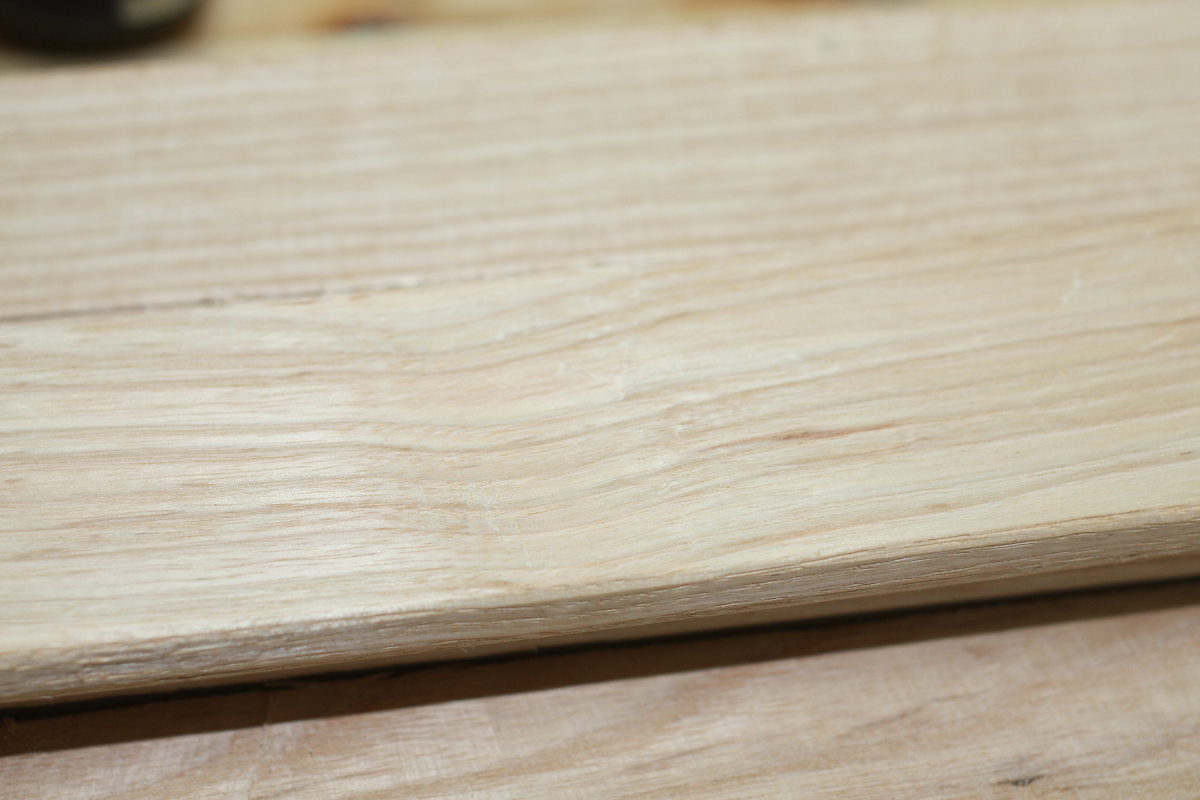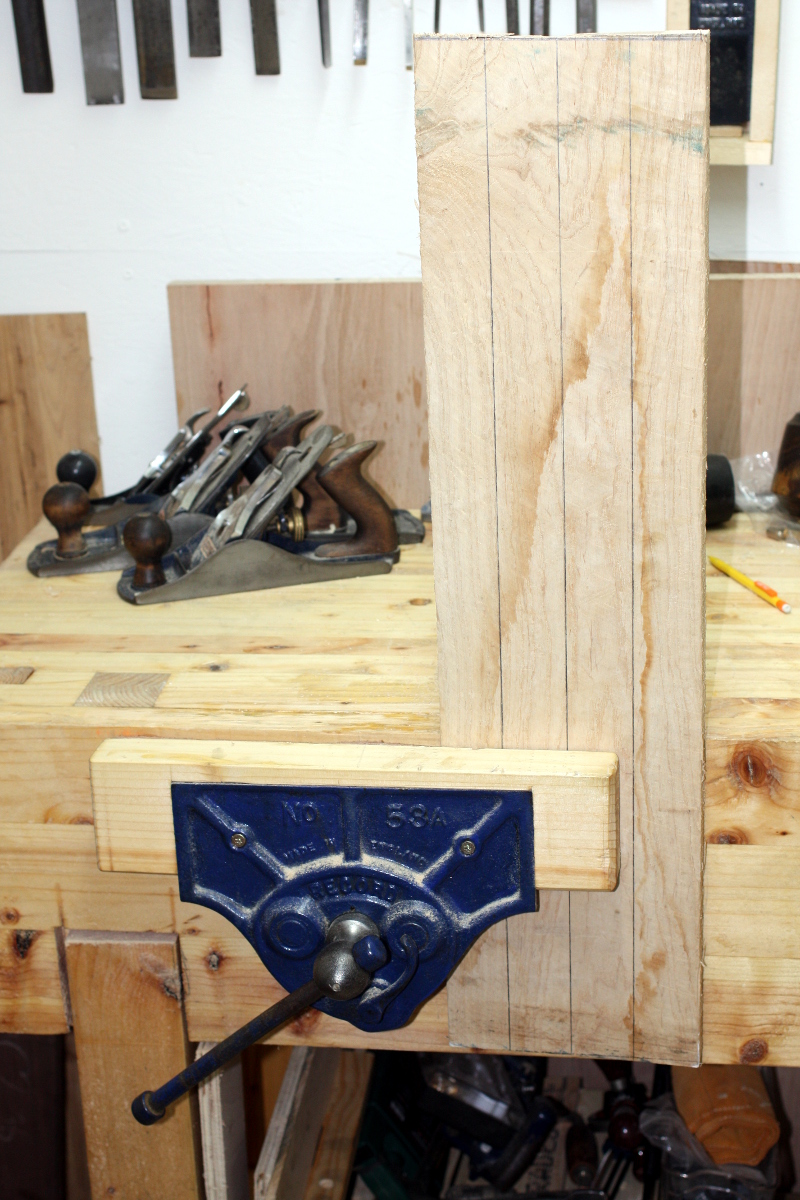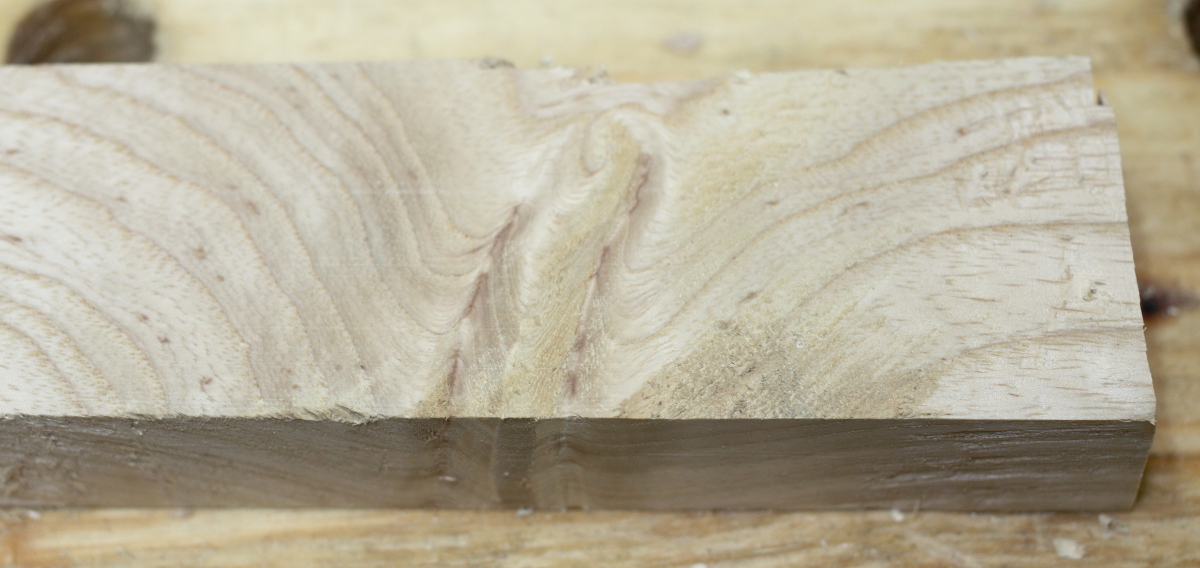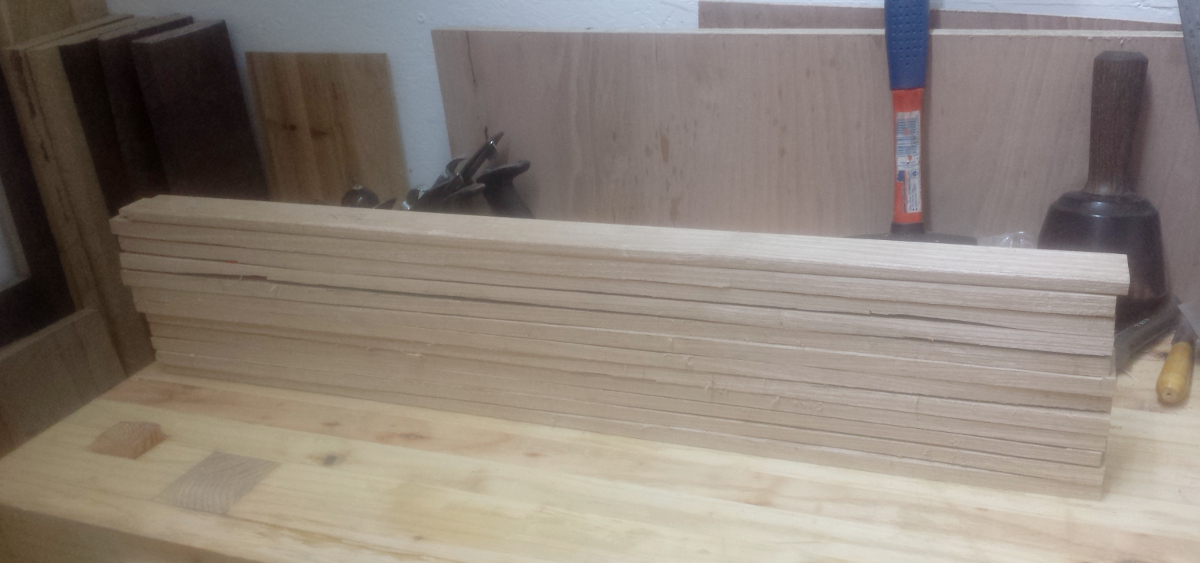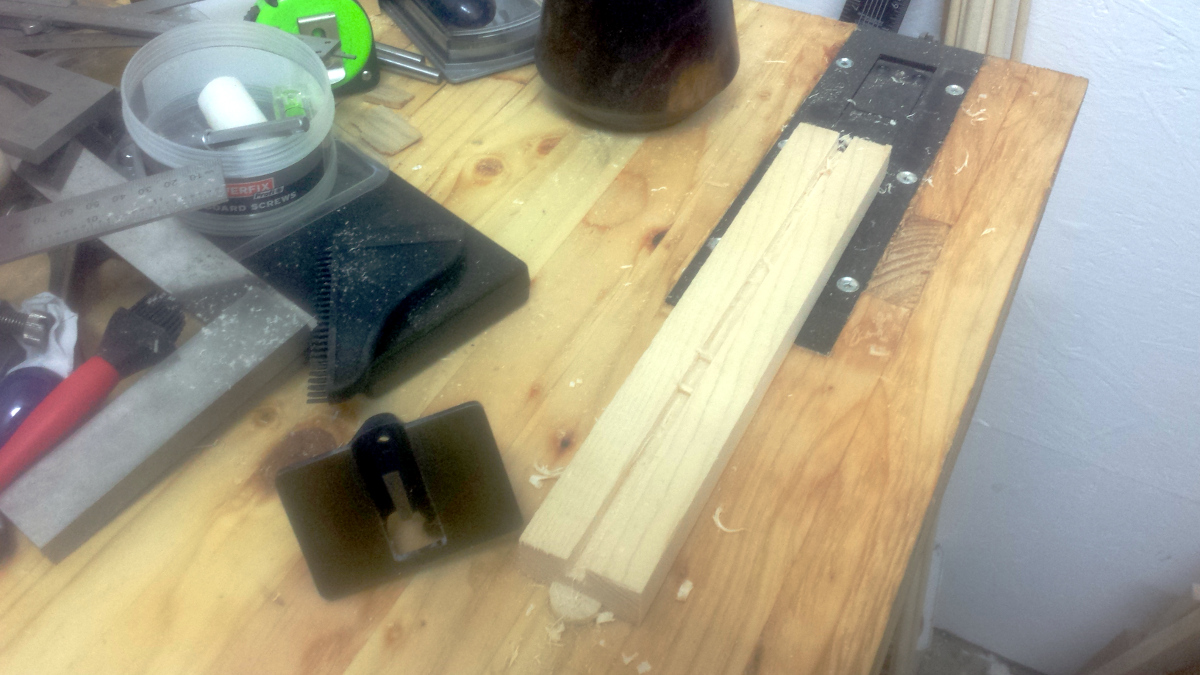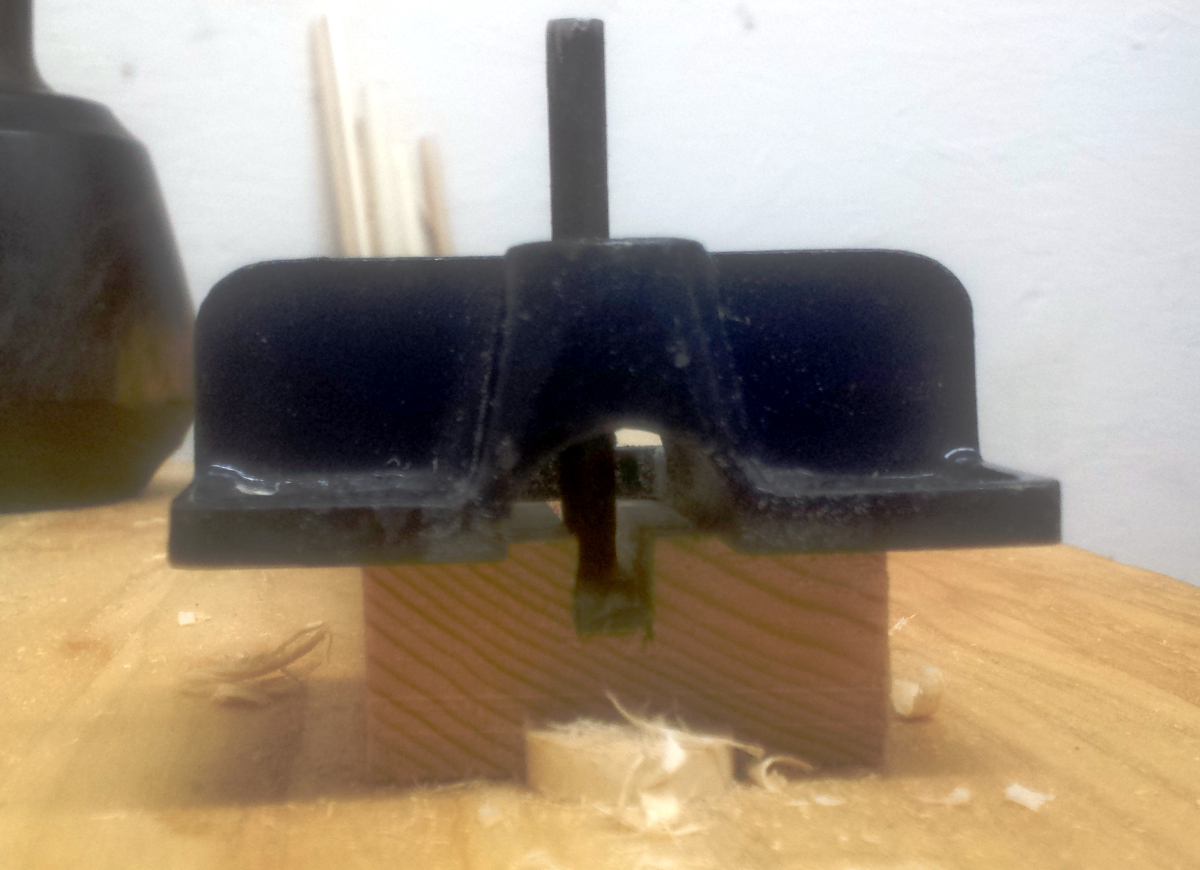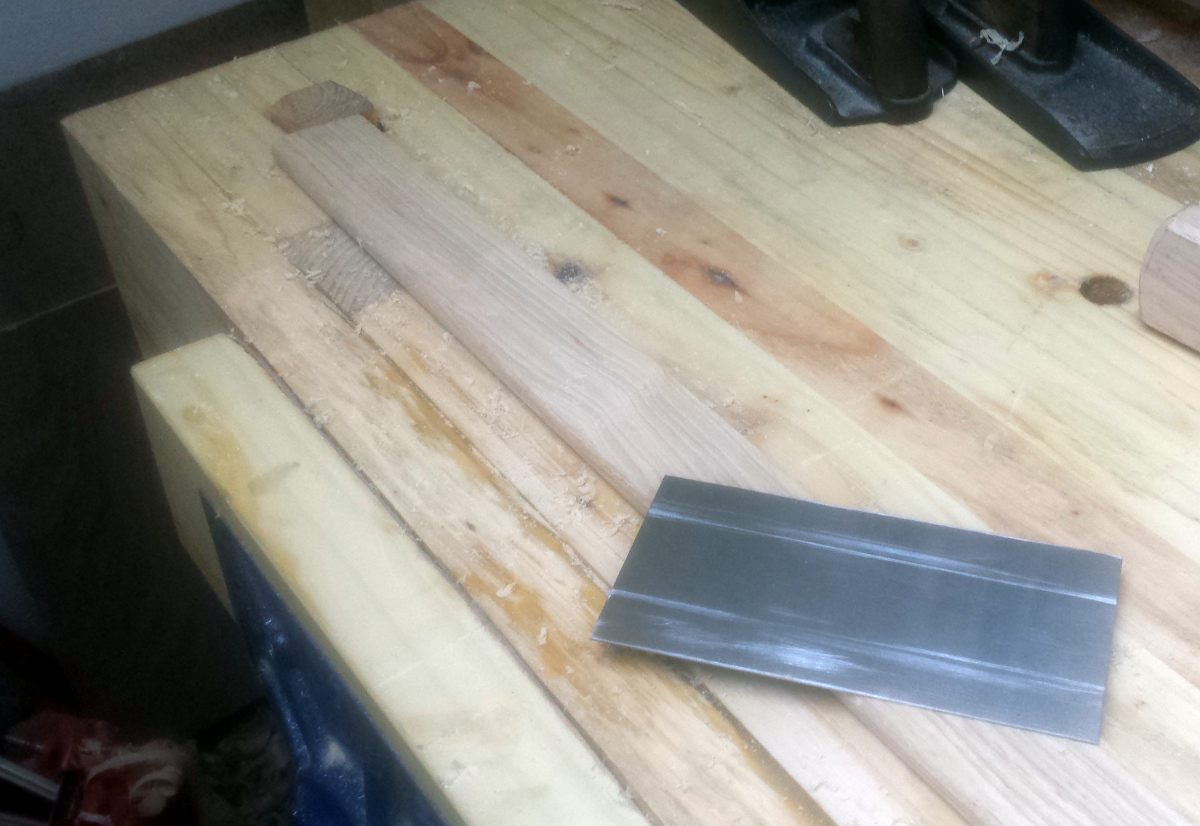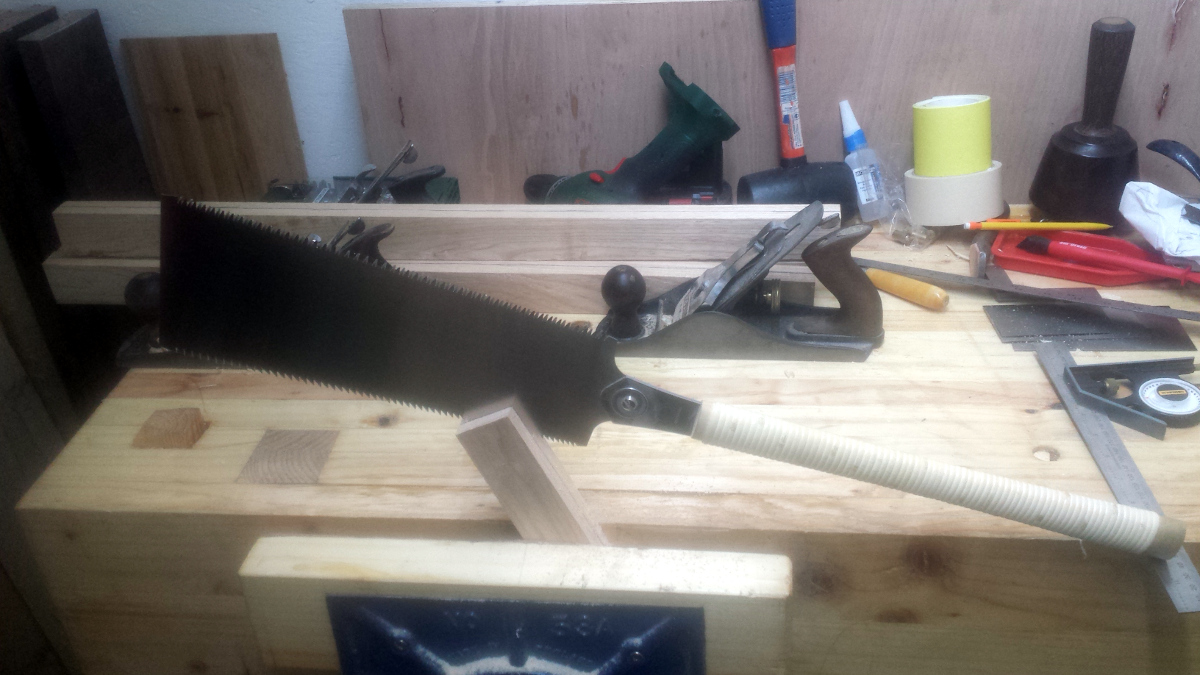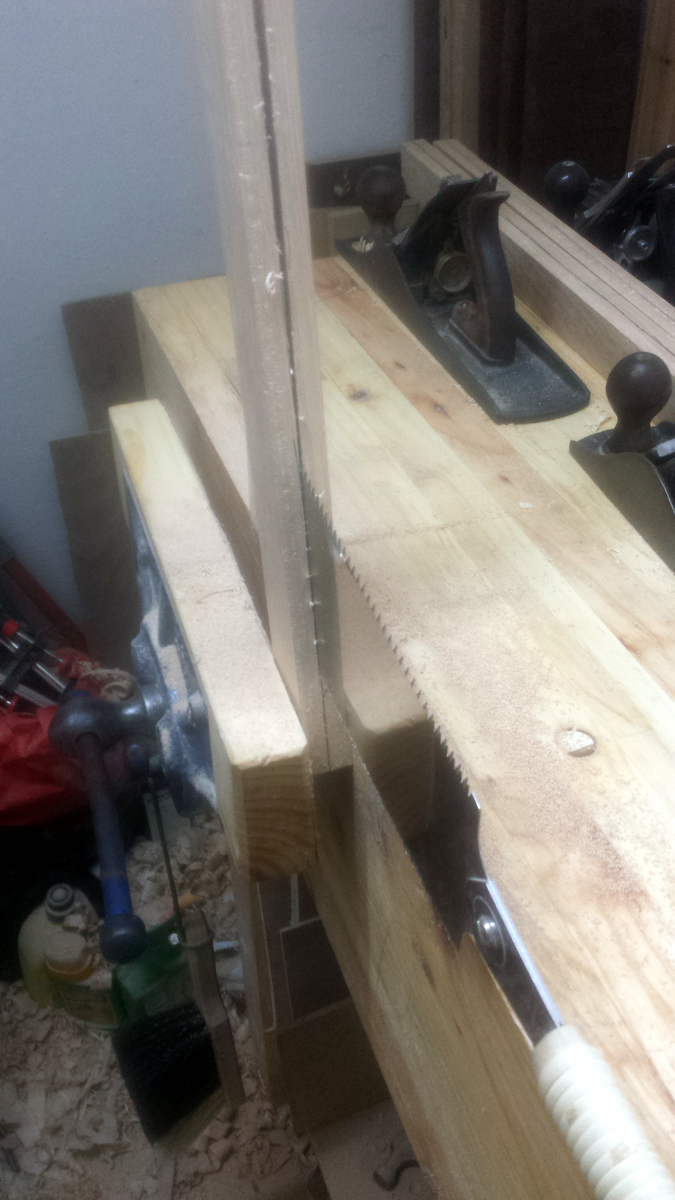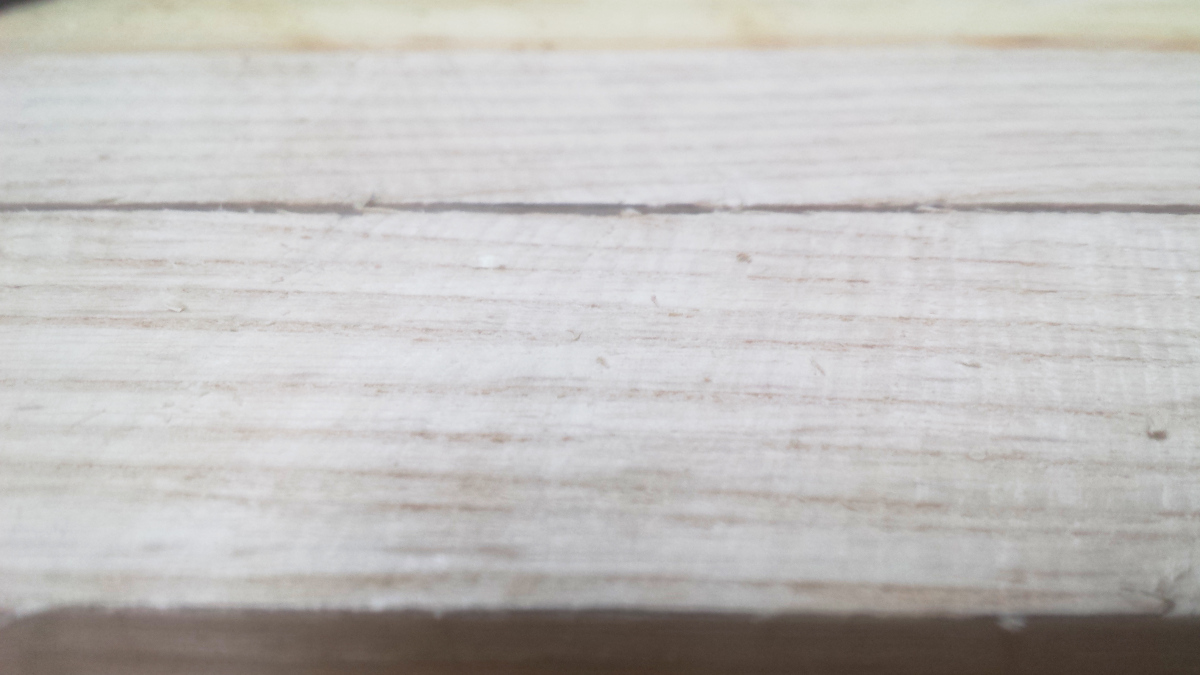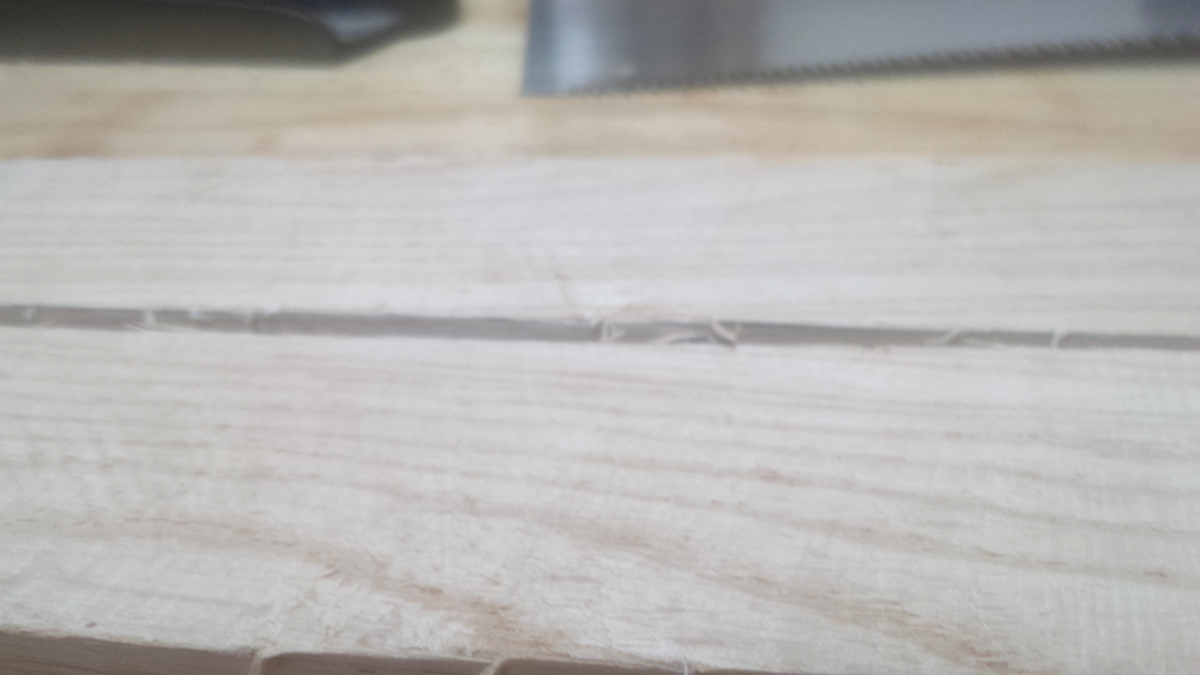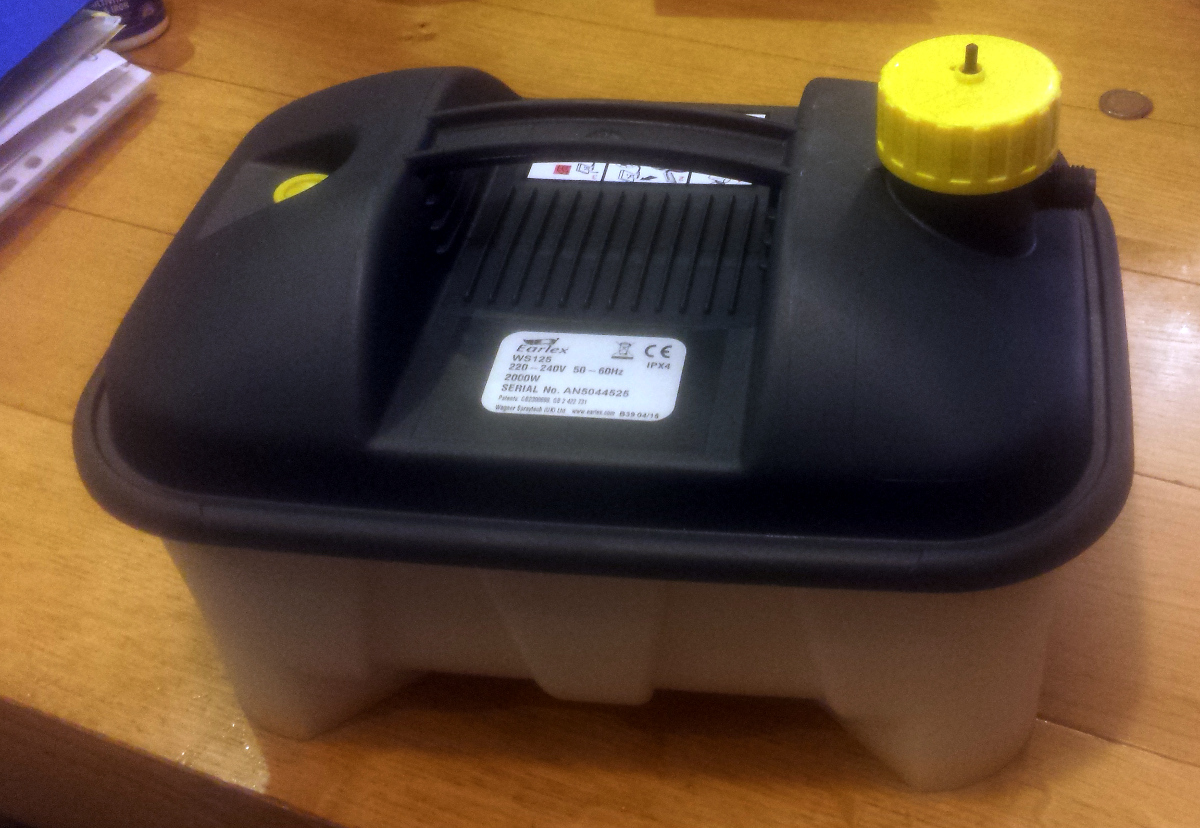So I was trying to get a nice photo of a piece of the grain on one of the spars last night that had slightly hinky grain and which had torn out even on the smoothing plane, but which the card scraper had done a lovely number on. The camera on the samsung S4 phone I use was just not picking out the detail very well. Then today a workmate (thanks Gary!) loaned me his Canon 450D to try out. Holy crap. I used a Pentax SLR a few decades ago, and one of the Fuji not-quite-a-DSLR camera a decade ago for photos of target shooting stuff, so I knew the DSLR was going to be good, but seriously, holy crap it’s just in a whole other category.
Here’s the un-post-processed images of that tear-out patch of grain (I’ve just resized the image to the same 1200×800 size in both).
Cameraphone: Canon:
Canon:
Normally I have to play with the cameraphone images quite a bit to sort out white balance and colours and so on (and it’s not always possible to get it right), but the canon gets it right off the bat. And the detail is so much better.
Anyway…
Spent the shed time this evening taking the 72″ ash board I had, and rough-cutting 30″ out of it…
…marking that out with the slat template…
…and ripping it down to make four slat blanks…
 The ripping did not go so well this time. I’m pretty unhappy with it in fact, and I’ll only just be within tolerances when the slats are resawn and prepped. Finished up by planing the blanks around to make the marking up easier tomorrow.
The ripping did not go so well this time. I’m pretty unhappy with it in fact, and I’ll only just be within tolerances when the slats are resawn and prepped. Finished up by planing the blanks around to make the marking up easier tomorrow.
You can see why I’m unhappy with that ripping!
I did notice some very nice grain in one of them though, I must remember to keep it on the top side of the slat in the assembly:
Pretty!
